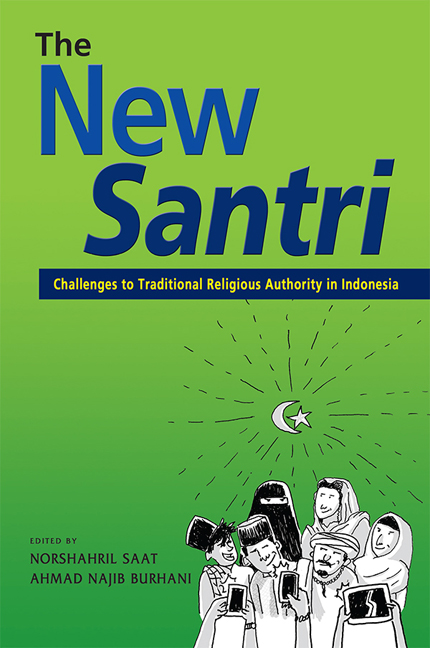10 - Nurturing Religious Authority among Tablighi Jamaat in Indonesia: Going Out for Khuruj and Becoming Preacher
Published online by Cambridge University Press: 24 November 2020
Summary
Empty mesjids cried floods of tears,
As no worshippers made sujood for many years,
And then crowds came back and thronged their floors,
You can see angels smile, and the heavens echo with applause
Introduction
Mesjid Kebon Jeruk, an old mosque situated in West Jakarta, Indonesia, is always alive with religious activities. Every Thursday, about 2,000 men will gather at the mosque built by a Chinese woman in 1817, following lectures by an ustadz (religious teacher). Dressed in kurtas— long-sleeved and hip length shirt traditionally worn by men in India, for which they are easily identifiable—and putting on white hajj caps, they are also dressed in robes, a long and loose shirt commonly worn by the Arabs. Most will have their beards lengthened and moustache shaved. They are followers of Tablighi Jamaat, or Tablighis, literally “a group for preachers”, who come from Jakarta, West Java, East Java and the other regions in Indonesia. The Tablighis usually carry large bags of clothing and other supplies with them.
The aforementioned is the most popular poem of the Tablighis that best describes the calling for the Muslims to go back to mosque. In practice, they go out on small group tours to invite Muslims whom they had visited to conduct the canonical prayer in mosque and to bring the message of the Tablighi Jamaat to the Muslims. This activity is called khuruj (or jaula in Urdu), which according to several scholars (Sikand 2002; Sila 2010 and 2016; and Noor 2012) is both unique and critical to the Tablighi Jamaat. It is unique because khuruj (which is called tashkil in Indonesia and Malaysia) may take days, weeks or even months (Noor 2012). At the end of the tour, participants will report back orally their experiences to the mosque-based group from which they set out. The act of presenting these reports is called karguzari. Sikand (2002) and Noor (2012) have discussed that Tablighi Jamaat became the most widely followed movement and sparked controversy among Muslim scholars. But the two agreed that there is nothing to worry about the Tablighis and their khuruj activities. Similarly, Dekmejian (1985) excluded Tablighi Jamaat from the list of Islamic fundamentalist groups since the books they refer to and the religious activities they perform do not contradict with mainstream Islam.
- Type
- Chapter
- Information
- The New SantriChallenges to Traditional Religious Authority in Indonesia, pp. 177 - 195Publisher: ISEAS–Yusof Ishak InstitutePrint publication year: 2020

